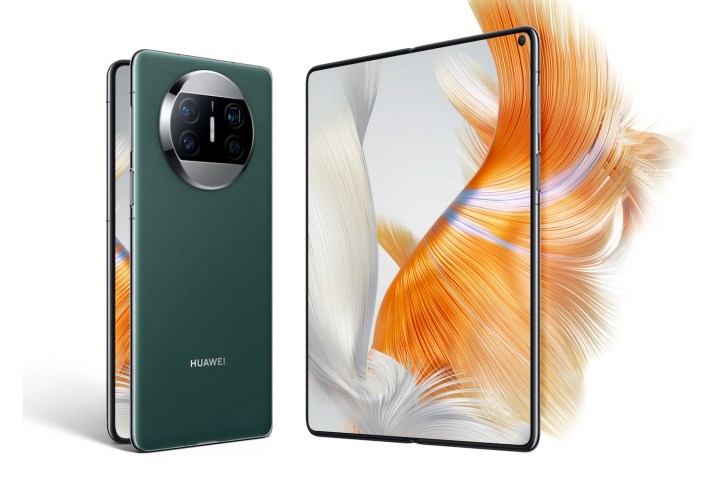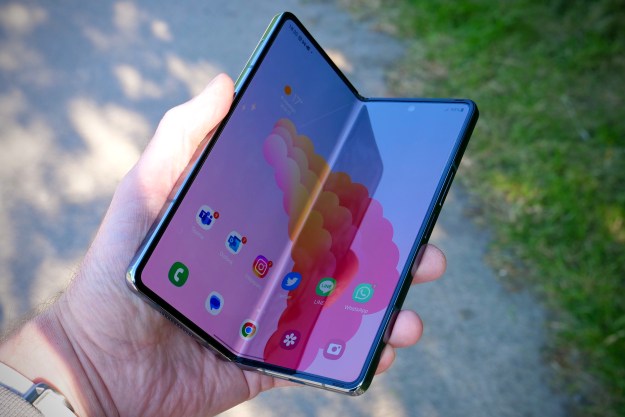Huawei has been at the forefront of folding smartphone design since the very beginning, and its latest model, the Mate X3, shows the company hasn’t lost any of its drive to push the emerging hardware segment forward.
Through clever use of new materials and design processes, the Mate X3 is the thinnest and lightest big-screen foldable released so far. It’s a hair over 11mm thick when closed up, 5.3mm when opened flat, and weighs 239 grams.

It’s best to have some context here. The Samsung Galaxy Z Fold 4 is 15.8mm thick at the hinge (although 14mm thick at its thinnest point when closed, and unlike the Mate X3, it doesn’t close flat) and 6.3mm thick when opened. That’s not all that different, but the major change is in the weight, as the Z Fold 4 is considerably heavier at 263 grams. More surprisingly, the Mate X3 is only a single gram lighter than the non-folding, seriously weighty Apple iPhone 14 Pro Max.
Huawei has used various materials, including aluminum and carbon fiber, and a new structure to achieve this size and weight. Durability has been maintained with an IPX8 water-resistance rating. The wing-shaped hinge is aluminum and can be set at almost any angle when being opened. The open 7.85-inch OLED screen is covered in a special “non-Newtonian” material, which gets stronger as more force is applied, and Huawei says it’s 4x more impact resistant compared to the previous material used on the Huawei Mate X2. The outer screen is a 6.4-inch OLED and is covered in Huawei’s Kunlun glass.
The camera on the back starts with a 50-megapixel main camera, along with a 13MP wide-angle and a 12MP periscope telephoto camera for a 5x optical zoom and a 50x digital zoom. The battery powering it all has a 4,800mAh capacity with 66-watt wired charging, 50W wireless charging, and 7.5W reverse charging. On the software side, Huawei has its own split-screen, multi-window feature. There are two versions available, one in a black “Sand Glass” finish and the other in dark green leather.
But for all its high-tech splendor, several key aspects for long-term success are missing. And, unfortunately, the price doesn’t reflect this. The processor is last year’s flagship offering, the Qualcomm Snapdragon 8+ Gen 1. Although excellent, it isn’t the latest out there. It also comes with a 4G modem and won’t connect to a 5G signal, and it uses Huawei’s App Gallery for apps, not Google Play. This can cause problems with finding and installing many popular apps.
These are things to consider before paying the 2,000 British pound asking price, which is around $2,528 U.S., making it substantially more expensive than the Samsung Galaxy Z Fold 4. It’s also at least double the price of the Tecno Phantom V Fold, the cheapest big-screen folding smartphone we’ve seen yet. There are clearly advantages to the Mate X3, and plenty of research and development went into its creation, but this is still a very high price.
It launches in the U.K. on May 26 through Huawei’s online store, and it’ll be out in the rest of Europe the week before on May 22, where it will cost 2199 euros. A U.S. launch is extremely unlikely.
Editors' Recommendations
- Samsung Galaxy Z Fold 6: news, rumored price, release date, and more
- New Galaxy Z Fold 5 and Flip 5 features are heading to older devices
- Samsung Galaxy Z Fold 5: two things I hate (and two I love)
- Can the Pixel Fold’s camera beat the Galaxy Z Fold 4? I found out
- This phone may have already beat the Galaxy Z Flip 5 in a big way




